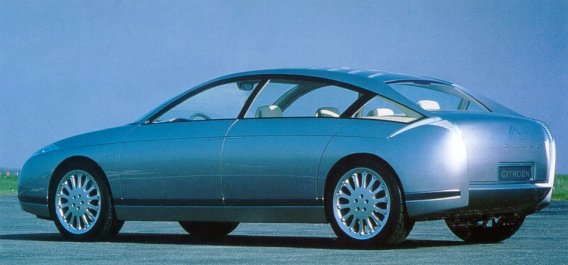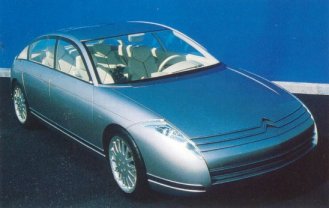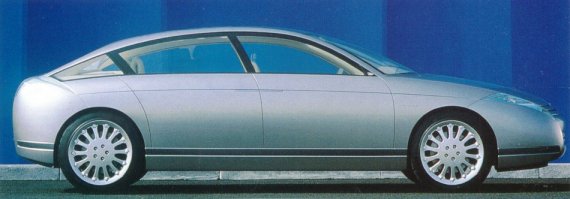every freedom to work without
interference was essential. 'Only on January 10th, during a presentation of the car in
Nice, would we decide to show the car in Geneva, or not'.
Immediately after the 'green light' meeting in October, Blakeslee adressed his team and
said: 'Ladies and gentlemen, we have a unique project, but only one week to show our
management what we want'. Everybody went crazy, throwing their routine chores aside and
working day and night, both in the office and at home, to do initial sketches and make ten
1/5 scale models, in just a week's time. Blakeslee made a short-list from those ten
because he wanted to confront the management - including PSA product development man
Peugeot and CitroŽn's marketing chief Vincent Besson - with only three scale models to
choose from. They soon fell for young Marc Pinson's proposal, as well as the interior
suggestion sketches of Russian-born Vladimir Pirojkov. 'You should remember that I did
only two black-and-white sketches from which we had to make the scale model', Marc Pinson
remembers. 'My modeller and I were working together, myself transferring the sketched idea
into a three-dimensional shape, and him trying to give perfect symmetry to my ideas'. it
really was an example of traditional designers' talent and skill, since no computer was
involved in this artistic process. But it was early November, so only four months were
left to go before Geneva. |
 |
 |
| 'That was really a critical
moment, since who could do a full-scale body for us?' Blakeslee explains the time
pressure. He decided to give G.Studio in Turin, who he never worked with before, a call'.
I had seen their work for Renault and Peugeot, and was impressed by the detailing'.
But G.Studio first said 'no', then 'we can't say no on the phone' and only after a long
lunch and many convincing words from Blakeslee, they accepted. The challenge was clear,
since by doing a full-scale body from a 1/5 scalemodel |
means that you miss an
intermediate stage. 'Their secret lies apparently in a unique millingprocess which I
cannot talk about in detail. But the body - built on adapted XM underpinnings - is a
mixture of carbon fibre here, and epowood there', Blakeslee says while praising G.Studio's
tradi-tional craftsmanship at the same time. 'I wanted the tail-lights to express the
image of classic Parisian Lalique crystal work. The modeller listened and got the message,
worked around the clock and did a wonderful job". |
|
|
The design
philosophy was, of course, another essential aspect of the C6 Lignage. 'For me the C6 had
to contain three elements,' Blakeslee says. 'One was the centre line profile, which should
make the car recognisable by virtue of its silhouette alone. Then the car needed simple
body sides and surface treatment, and personally 1 feel that you should not torture sheet
metal with feature lines and profiles. And third was that the car would express a
surprising and hopefully intriguing rear-end design, Then, somehow, you have to find the
magic to blend these elements. 1 do not believe in retro but if you apply' certain
traditional principles, or details, the result can be very interesting. And by the way:
can you imagine CitroŽn going into the next millennium with a new design ruled by retro
elements? That is something impossible for this company!'
Blakeslee continued by saying that a CitroŽn interior is something about poetry, with
nice flowing shapes and even a lyric message. 'When Vladimir |
|
|


